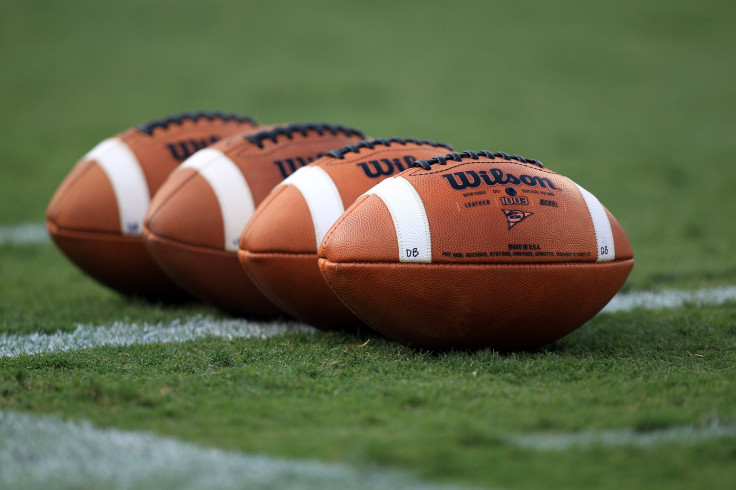Football Concussions: Head Injuries Not Confined To NFL; Youth, High School, College Players At Risk

One in 30 football players ages 5 to 14 will sustain at least one concussion per season, research published Monday indicates. And youth athletes along with high school footballers suffer concussions more frequently than knee sprains and fractures. These are among the key findings of the first study to describe instances of concussion in practices and games across the youth, high school and college competition levels, published in JAMA Pediatrics.
Football is arguably the nation’s most popular sport. There are about 3 million youth football players nationwide as well as 1.1 million high school athletes and 100,000 college players. But lately, neurologists have raised concerns over the possible risk players face of developing long-term brain damage from taking repeated hits to the head. More than 70 former NFL players have suffered from chronic traumatic encephalopathy, a degenerative brain disease thought to be related to impact.
In an analysis led by Thomas Dompier, president of the Datalys Center for Sports Injury Research and Prevention in Indianapolis, researchers present an overview of the number of concussions suffered in youth, high school and college football during the 2012 and 2013 seasons. Researchers say the number of concussions measured by the study is likely low, since it doesn't account for players who choose not to report symptoms.
Among the 20,354 players who participated in the study, researchers found on average, one in 14 high school players and one in 20 NCAA players will suffer at least one concussion in a season. Overall, the researchers discovered all players suffered 1,198 concussions during the two seasons combined. The analysis captured 4,092 youth players, 11,957 high school players and 4,305 college athletes:
The researchers compared the rate of concussion across competitive levels to other common injuries football players suffer in both practices and games. The graph below depicts the injury rate per 1,000 athlete exposures in games. An athlete exposure represents one athlete who plays for one season:
This graph depicts the injury rate in practices:
Players at the youth level suffered more concussions during games than in practices as a percentage of total injuries, but players at the high school and collegiate levels sustained more concussions during practice than in games. The researchers say this difference may be due to the fact that youth players typically practice only once or twice a week.
The authors say limiting full contact in practices is an important strategy for controlling the risk players face of sustaining a concussion. The NFL’s Heads Up Football program began in 2012 through USA Football, a youth football organization that helped to fund the analysis, to train coaches of youth and high school programs to teach proper tackling techniques. A nonprofit called the Sports Legacy Institute is advocating for a “hit count” that would track the number of hits each player sustains so coaches and athletic trainers can better monitor risk.
For their analysis, the researchers gathered data from 118 youth football teams through the Youth Football Surveillance System, 96 high school programs through the National Athletic Treatment, Injury and Outcomes Network, and 24 colleges from the NCAA Injury Surveillance Program.
© Copyright IBTimes 2024. All rights reserved.






















